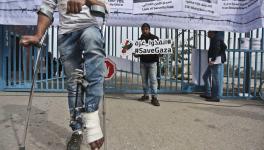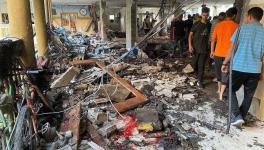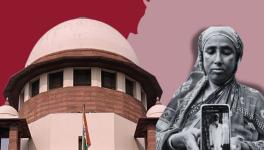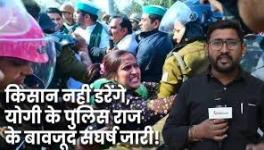BNS: Black-and-White Treatment of Rainbow of Masculinities
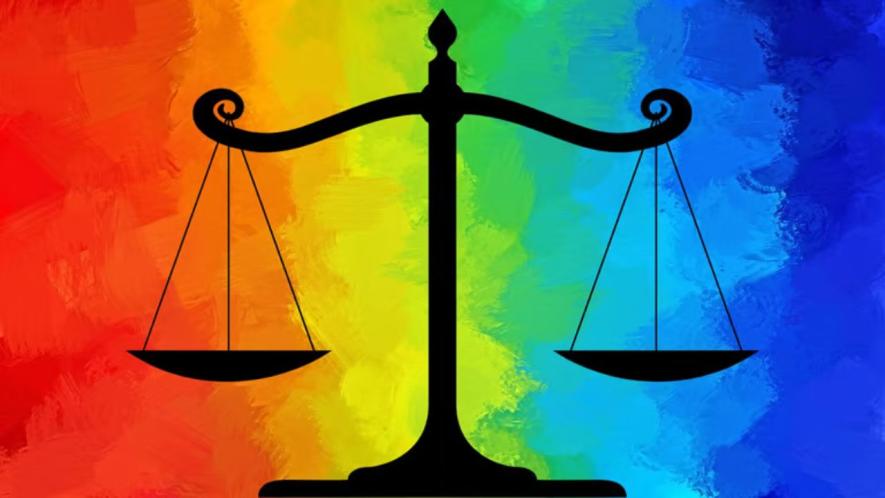
In 2024, India introduced a legal reform with the implementation of three new criminal laws, the Bharatiya Nyaya Sanhita (BNS), Bharatiya Nagarik Suraksha Sanhita (BNSS), and Bharatiya Sakshya Adhiniyam (BNA) (criminal laws) replacing the existing Indian Penal Code (IPC), 1860; Code of Criminal Procedure (CrPC), 1973 and the Indian Evidence Act, 1872, respectively.
The BNS had a history-altering chance to make room for necessary changes in the gendered approach to sexual abuse or adult rape laws. However, it left the section of people who are ‘male’ or ‘man’ as per government documents (such as Aadhaar cards, PAN cards, voter ID cards and caste certificates) vulnerable to breach of sexual autonomy. To date, the BNS has failed to bridge the gap created due to gendered laws on sexual abuse for adult men. (Note: In this piece, ‘men’ or ‘male’ refers to those who are male on government documents.)
The BNS had a history-altering chance to make room for necessary changes in the gendered approach to sexual abuse or adult rape laws.
Gendered ‘rape laws’
The 172nd report of the Law Commission of India on Review of Rape Laws brought out in March 2000 recommended that rape laws in India be reconstructed as gender-neutral.
Speaking in the context of the IPC, the report said, “[T]he commission recommended changes for widening the scope of the offence in Section 375 and to make it gender-neutral.” A Criminal Law Amendment Bill, put forward in the Parliament by K.T.S. Tulsi, has also sought to make rape laws gender-neutral.
Section 375 of the IPC defined rape assuming the wrongdoer to be necessarily a man and the victim to be necessarily a woman. Section 377 of the IPC declared “intercourse against the order of nature with any man, woman…” as a punishable offence. In 2013, this Section was scrapped and non-heteronormative sex was decriminalised.
The Leaflet spoke to Anirudh in this context. Anirudh is a 27-year-old, dominant-caste, trans-femme person from Bengaluru. From their experience of social work in the human rights space that primarily focuses on the LGBTQI+ community since 2018, they told us that the lack of laws to protect men (cis- and hetero-normative and trans-queer) must be looked at as an erasure of human rights.
“We should understand it as a concern of human rights, not particularly as an issue of one community— the queer community. Such an approach leads to the othering of queer people. Queer people are, of course, disproportionately affected but we need to take the conversation in a way that identifies the current situation as a legal gap in our society,” Anirudh said.
While there are reports globally that study sexual assault done against adult males, no such study in the Indian context can be found in the public domain. While a few such studies, based on experiences of transmasculine people, cis-gay men and queer men who have sex with men exist.
According to one such research, investigation on sexual violence has primarily focused on women, leaving the experiences of other populations, such as men who have sex with men (MSM) and transgender individuals (collectively MSM-T), underexplored despite the well-known vulnerability of these palpitations to such violence.
In developing countries such as India, MSM-T face heightened risks due to deeply entrenched societal and structural biases against same-sex relationships. The prevalence of sexual violence against this population is likely underreported, largely due to the stigma surrounding male victims of sexual violence and the social marginalisation of MSM-T communities.
The BNS has failed to bridge the gap created due to gendered laws on sexual abuse for adult men.
To broaden the scope of the law, instead of using ‘woman’ or ‘man’, the 172nd report had recommended the use of the term ‘person’ in defining sexual assault, consent, punishment and other important concepts. Such a change is important for people who are either male or transgender on paper.
When it comes to the protection of transgender people (who identify so on government-issued identity cards) against sexual abuse, the laws are far from adequate. The Transgender Persons (Protection of Rights) Act, 2019 provides some legal recognition and protections, but it falls short of addressing the severity of the issue. Under this law, perpetrators of sexual assault against transgender individuals can face a prison sentence of only up to two years, alongside a fine.
Caste and class matter
Caste and class are very important factors to be looked at. Platforms such Dalit Queer Project have served as important spaces of intervention, becoming a living archive of caste and queerness in the virtual space.
In an essay called Hopeful rantings of a Dalit Queer Person, Dhiren Borisa, an urban sexual geographer, articulates how and why the queer movement in India owes to the anti-caste movement. He wrote, “As Dalit Bahujan Adivasi queers, we know where our solidarities lie. For we have been historically denied the respectability on the backs of which rests this victory that we celebrate.
“For many of us, ‘coming out’ as Dalit has been more difficult a journey than ‘coming out’ as gays. You will not see many of us in your fancy parties that imagine inclusivity through gatekeeping.
“Some of us might secure entry because we have claimed some access through education and mobility. Yet we must still hide our social locations to assume desirability.”
For the queer and trans people who are from caste-oppressed sections or religious minorities, the discrimination and its impacts are layered.
In a media report, while speaking on horizontal reservations for trans people, Living Smile Vidya, a theatre practitioner and activist said, “The career, lifestyle, education and earnings each one of us within the trans community experiences, largely depends on our caste backgrounds and privileges that come with it.
“While upper-caste trans persons fight for cultural rights, Dalit–Bahujan–Adivasi (DBA) trans persons fight for survival and employment. That’s how different the dynamics within the community are.”
While there are reports globally that study sexual assault done against adult males, no such study in the Indian context can be found in the public domain.
Grace Banu, is another prominent person in this movement. Shifa, a 30-year-old Scheduled Caste genderqueer living in Mumbai holds this true, “Those fighting for trans rights at the grassroots level are mostly trans people from marginalised identities.”
They tell The Leaflet, “I am learning about my identity every day, even without hormone replacement therapy (HRT), I am trans. Even if I do not go for surgery, I am trans.” However, with a ‘male’ identity in the government document due to the way the BNS is structured, there exists no law for protecting them against sexual abuse.
Masculinity and the intervention of class and caste
Masculinity is not synonymous with man and there are no static and universally accepted definitions for either. A report by Maara Collective, Construction of Masculinities in India, points out that men's rights activists, particularly those who oppose core ideas of feminism, have often disregarded the influence of patriarchal structures on their lives.
Instead, they feel victimised by discussions around gender equality. Their resistance dates back to the 1990s with groups such as ‘Pirito Purush’ (The Persecuted Man) in Kolkata, ‘Purush Hakka Samrakshan Samiti’ (Committee for the Protection of Men’s Rights) in Mumbai, and ‘Patni Atyachar Virodhi Morcha’ (Protesting Torture by Wives) in Lucknow.
These organisations, instead of engaging with the complexities of masculinity, opposed the laws designed to safeguard women's rights, such as those addressing dowry and domestic cruelty.
The Maara report notes a recent shift from viewing men solely as perpetrators to fostering changes in their attitudes and behaviours, however, deeper issues— such as how power and masculinity intersect with other social identities, such as class, caste and gender— remain insufficiently explored.
A study held in six metropolitan cities of India focusing on violence, including sexual, faced by MSM highlighted that factors such as lower levels of education and income further amplify the degree of vulnerability.
Their findings align with global research, which points to similar risk factors for violence against sexual minorities in areas marked by deep-seated homophobia and socio-economic inequality.
The insights from this research serve as a stark reminder of the urgent need for inclusive policies and targeted legal as well as awareness-centered interventions. Unfortunately, the BNS has missed the chance to do the needful.
These organisations, instead of engaging with the complexities of masculinity, opposed the laws designed to safeguard women's rights, such as those addressing dowry and domestic cruelty.
The study categorises violence into five types— physical, verbal, sexual, cyber and relational. The key findings on sexual violence suggest that “sexual violence is as common as verbal and physical violence against MSM individuals when they are caught engaging in sexual activity at ‘gay cruising sites’. The intensity of sexual violence is greater for transgender individuals and may include extreme forms of violence such as gang rape.”
Risks of sexual abuse faced by queer, gay and trans people
R. Bhatt is a 28-year-old Other Backward Class (OBC) cis gay man living in Patna, Bihar. Having graduated from Delhi University, he has been preparing for various government exams for the last five years and is hopeful to get through.
Says R., “Sexual harassment is not defined by one's gender. Sexual harassment can happen to anyone with a particular gender. If gender equality is talked about on one side then laws like BNS show there is a bias.”
This reporter had first met R. in 2023, at the Patna Pride Parade during a reporting trip and spoke informally at length. He began with a little hesitation at first but slowly eased into opening up about his sexuality and desires.
He asked this reporter about Grindr, a dating app for queer people. His questions initially came from a place of hesitation about one’s desires and internalised social stigma attached to queerness.
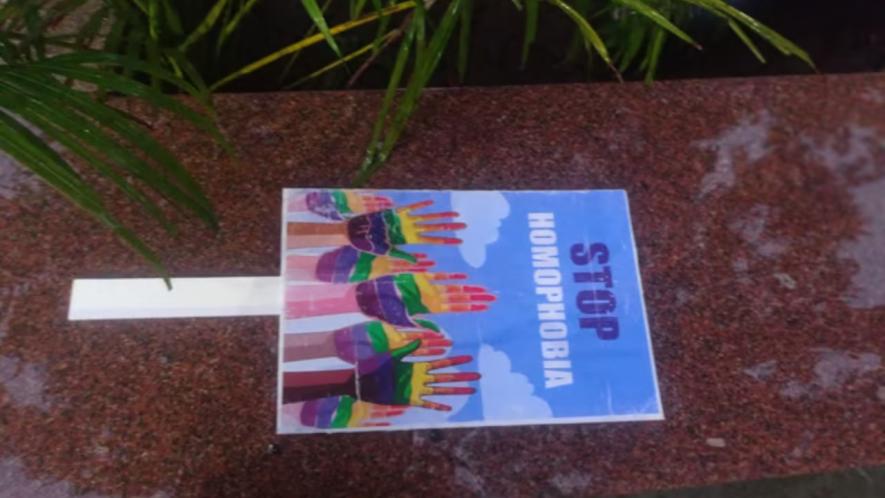
Images from Patna Pride Walk, 2023. Image credit: Aishwarya AVRaj.
While upper-caste trans persons fight for cultural rights, DBA trans persons fight for survival and employment. That’s how different the dynamics within the community are.
In a recent conversation, he said, “I have been using Grindr since the last time we met. Sometimes people put their fake photos or false ages on the app. Older men are less likely to get swipes. Sometimes they lie about their preference— being top or bottom or flexible. When you meet them, you are taken by surprise to see that their personalities are different from what is shown in the app.
In such cases, many times the other person does not understand your position. They are like, now that you are here, let us have sex. Such insisting gets a little bad at times. Once I had to lie to get out of the man's room.”
Such are the experiences for gay men using Grindr in small towns of Bihar. R. shared an unsettling experience from his time on the app. He had matched with someone and arranged to meet in person.
When he arrived at the location, he was taken aback to see a group of men standing together. He felt uneasy and quickly decided to leave before they noticed him and removed the profile from his Grindr account.
A research based in six metro cities of India, studying men aged 18–70 years who have sex with other men investigated risk factors for violence including those sexual in nature. It found that more than 60 percent of respondents reported experiencing at least one form of violence because of their sexuality.
The study also revealed that individuals in the receptive role (bottom) were nearly six times more likely to encounter verbal abuse compared to those in the penetrative role. Additionally, Muslim respondents were 2.6 times more likely to face sexual violence compared to their Hindu counterparts.
M. Kumar is a 35-year-old Scheduled Caste person who lives in New Delhi and who once located themselves as a Hijra. Educated till class eighth, M. belongs to a low-income group household. They started working at an early age.
“I was the youngest of the siblings. Our father died when I was two months old. My mother used to work as a labourer, because our financial condition was not that good, we all had to drop out of school and start working at an early age,” says M.
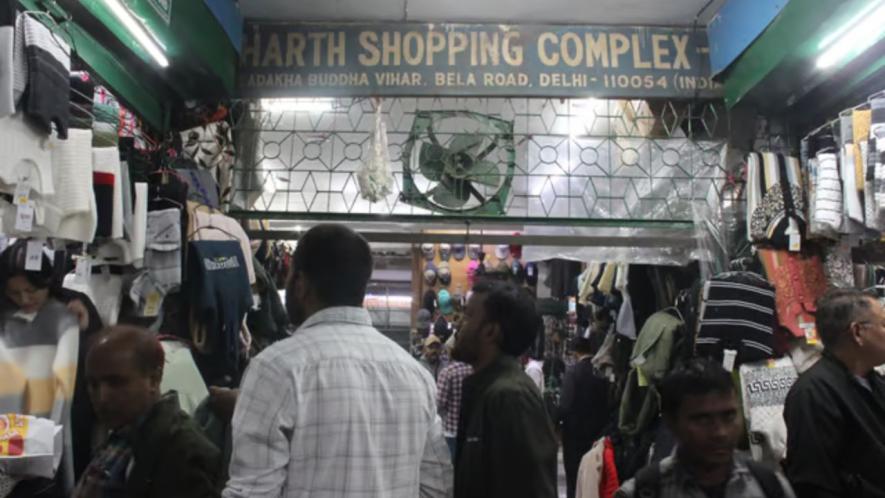
The building where M. Kumar has a shop. Image credit: Aishwarya AvRaj.
“My wife knew about it but not all the things,” they told The Leaflet. M. has also been a sex worker for some time. Currently, they have a shop in the Monastery Complex at Kashmiri Gate.
“I took some loans and managed to get this shop. The rent of the shop has recently increased to fourteen thousand rupees per month. What to do! Including electricity bills and all, one has to pay seventeen thousand for this small shop,” M continues.
The neighbouring shopkeepers do not know about M's sexuality or gender, “They might guess at times but I do not talk about my past life to them.” On official documents, M. is a male.
Now a father to two children, an eight-year-old boy and a year-old girl, M. Kumar often thinks of their younger days. In December 2024, they and their wife marked nine years of marriage.
Thinking of an alternate reality, they say, “I might have lived like a woman if things were different but I cannot abandon my family you know, I looked after my mother, she used to be sick. She recently died.”
“Now, I have kids and a wife to take care of. I am thinking of removing one of my earrings, kids are growing up, they should not have to face uncomfortable questions about their father,” said M., pointing to the two stud earrings they were wearing in their ears.
M.’s Hijra ‘guru’ lives in Chandigarh. “I used to go with my Hijra sisters to marriages and other festivities.” Until 2013–14, he lived in Chandigarh with his Hijra sisters.
They reminisce, “When I used to have very long hair, I wore gajra in them,” their eyes twinkling at the memory of the old days.
Shifa Thakkar is a 30-year-old, Scheduled Caste, transqueer living in Navi Mumbai. On government papers, Shifa is a male. They are the sole caregiver to their mother.
Recently they have gotten into sex work due to financial reasons and find safety as a concerning issue, “I have experience in how this is done. I meet the client online. When I started this work, people told me it was risky but they did not tell me how to protect myself from possible dangers. So, whenever I go to my client, I send my location to a few friends, not with any intent to harm the client but for my own safety.”
They told The Leaflet that many times the client wants to try some kink, such as BDSM, etc. but is not sufficiently educated on the practice. Such situations leave the service provider in a risky position.
Thinking of an alternate reality, they say, “I might have lived like a woman if things were different but I cannot abandon my family you know, I looked after my mother, she used to be sick. She recently died.”
Lack of legal support and government-initiated awareness campaigns
The study, which included Delhi and Mumbai, suggests that, “some transgender people reported receiving inhumane and disrespectful treatment from the police (including railway and traffic officers) and healthcare professionals.
“Sexual violence has been found to have psychosocial and sexual ramifications for MSM. Stigma related to homosexuality is a factor in sexual violence against MSM. Many incidents of sexual violence against MSM are never reported due to fear of judgment, male rape myths, stigma, etc.”
M. Kumar shared the risk of violence in sex work. With no support from the police, they had no choice but to use clapping as a safety measure on the road. When questioned about the police, they revealed that law enforcement offered no assistance, viewing their safety as unimportant.
Instead, police would sometimes pick them up from the streets while they were waiting for clients, taking them to the station where they were subjected to verbal abuse.
Anirudh told The Leaflet that queer individuals often face heightened risks and limited legal protections when engaging in activities such as cruising and seeking associations.
“Say, I'm a trans or queer person who has male on my ID card and I have gone to a cruising spot and I have been sexually assaulted by another man. Now, the law does not exist for me to be able to go to help. Even if I go to the police station to register my complaint, I will be called names such as chakka, meetha by the police themselves,” Anirudh says.
R. Bhatt has similar things to say. He points out the lack of awareness campaigns by the government for sexual assault against men, especially queer and trans people. He adds, “The people working at government institutions are not sensitised about our issues.”
Fear of exposure and hostile treatment from the police can be tackled through awareness programmes. However, the lack of a legal framework for the protection of queer, trans, Hijra and kothi people who due to various reasons are men on government IDs strips them of their constitutional rights.
Get the latest reports & analysis with people's perspective on Protests, movements & deep analytical videos, discussions of the current affairs in your Telegram app. Subscribe to NewsClick's Telegram channel & get Real-Time updates on stories, as they get published on our website.













